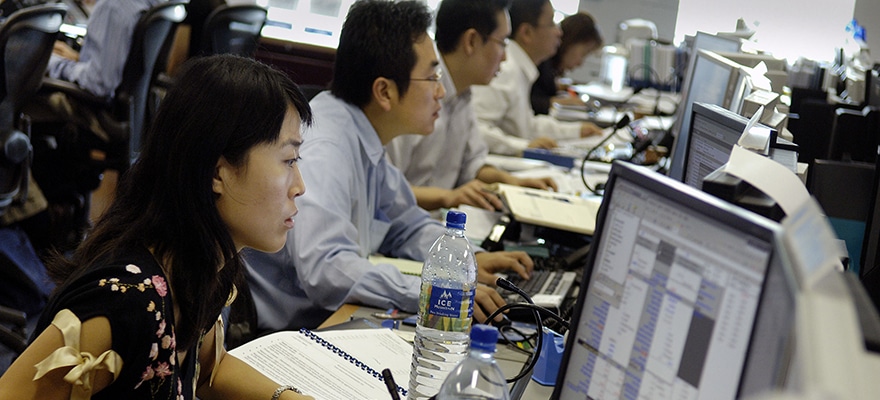The winds of change have been blowing for foreign exchange (FX) trading and accelerated when the pandemic began. Drawing parallels to the electronification of music into our everyday lives - whether they reside on a service platform, or in your favourite artist’s autotuned voice, pandemic or not, the involvement of technology is inevitable.
Firms that have not been trading electronically, began to, and for those who have been, their electronic trading volumes increased. Last year, we saw a significant increase in FX trading volume which was also observed by our industry peers. With government guidelines, lockdowns and work-from-home mandates inhibiting traditional FX trading practices, traders quickened their adoption of electronic and automated trading.
The COVID-19 global pandemic adjusted the way people traded FX and engaged with each other. The industry accepted some of the risk, compliance and operational processes plus the enhanced rules and systems, all aided by technology.

Wai Kin Chan BidFX
Organisations have come to accept that a password such as ‘ILoveJoyDivision866’ is more easily hackable than a two-step-authentication via thumb or facial recognition over a desktop or mobile application, and we have responded to help with our client requirements. There are new Liquidity providers (LPs) providing Liquidity Aggregation and established LPs finding new ways to distribute liquidity. Traders have more methods to engage the market and access liquidity.
With more ways to access the market, traders over the years have used automated parameter-based execution methods. FX is increasingly traded via algorithms (algos) as clients become more at ease and reliant on automation. Algos can help reduce market impact and slippage to achieve the best trade efficiencies, freeing traders’ time for more complicated orders and workflow. Trades are executed at predefined market conditions, data and time with more control than ever before.
According to a study by Coalition Greenwich, over 40 percent of FX traders conducted algo trading in 2020, and they expect to increase their usage this year. It comes as little surprise then that the global algorithmic trading market is estimated to grow at a compound annual growth rate of nearly 6 percent from now till 2025.
As traders shift more towards electronic trading, the increasing automation of trade workflows have also resulted in an exponential increase in the amount of data churned or collected. Whether a by-product or mandated by regulation, the benefits of more available data are clear. With the right set of analytical tools, firms can now analyse their trades and liquidity in greater detail. This helps to provide traders with a more comprehensive picture of the market, covering everything from various stream sizes to order types and venue nature.
The Role of Transaction Cost Analysis (TCA) and Liquidity Provision Analytics (LPA)
The value of data lies in its analysis. With the influx of accessible data, demand is rising for more sophisticated analysis to guide better decisions. This is changing the way traders are applying transaction cost analysis (TCA). TCA was used primarily as a ‘box-ticking exercise’ to meet regulatory requirements. But, as cost pressures and trading volumes rise, TCA tools are now used to ensure best practice, improve execution and reduce costs. As an example, static FX TCA reports were usually generated by established LPs for compliance purposes. But, with the expanded utility of TCA, many traders are now incorporating an open feedback loop: pre-trading, in-flight and post-execution decision-making. As there are many factors that go into the total cost and efficiency of execution, this enables a more holistic assessment to measure market impact, which is just as important to understand as spreads and slippages.
Many funds are going beyond even TCA in search of advanced liquidity analytics to get an even more complete and detailed picture. These can result in considerable savings and maximum efficiency across the execution process, as well as influence which LP traders might choose to use.
Enhancing Transparency with the FX Global Code
With these evolving changes to trading, it is expected to see the FX Global Code adapting and updated to enhance transparency and supporting TCA with its principles. The recent update by the Global Foreign Exchange Committee (GFXC) saw 11 of the Code’s 55 principles reviewed, which will improve post-trade processing and settlement risk practices among other things. Very recently, the GFXC clarified and confirmed that no additional hold times should be applied to last look checks in electronic spot FX transactions requiring LPs to update their dealing practices to price validity, credit check and the reduction of any additional hold time.
Changes in Infrastructures – Market and Firms
Given the rise of algos and electronic FX trading, the importance of technology and connectivity for FX cannot be understated. To position Singapore as the leading hub for e-FX trading activity in Asia, the Monetary Authority of Singapore is actively encouraging FX players to join the FX ecosystem. To date, with the helpfulness & efficiency of Singapore’s Central Bank along with grants and tax incentives, twelve LPs, six liquidity takers, nine electronic communications networks (ECN), platform or aggregators adopted into the SG1 trading infrastructure hub.
Singapore is well-positioned to be the FX hub within Southeast Asia, a region where rising international trade is driving the need for more sophisticated FX instruments and facilities. It also enjoys direct, low-latency connectivity to countries in South Asia and the Asia-Pacific. With more banks, non-bank LPs and other ecosystem players continuously building their FX trading and pricing engines in SG1, this will shave crucial milliseconds off latency on trades routed to existing FX hubs in Tokyo or London, thus enhancing Singapore’s appeal as a hub to trade everything from major currencies to emerging market offerings, especially localized deliverable and non-deliverable currencies.
The fast pace of technological change in the financial sector can prove difficult for many firms. Many organisations rely on in-house resources for connectivity, computing and performance monitoring, but this can become unsustainable, outdated, costly and a burden to security, operations and implementation. Trading organisations could consider alternative options, such as outsourcing their trading desk technology to specialised providers that can help reduce costs and achieve state-of-the-art cloud-based FX workflows and strategies, where concerns with limited and costly physical server facilities, getting timely and seamless updates to trading desktop functionalities are addressed.
Looking Ahead to the Evolving FX Trading Market
With market fragmentation, it is crucial to be capable of consolidating the growing quantities of FX data to make sense of the market landscape and execute the best trade and risk management decisions. Independent FX technology providers can add value by providing additional information and analyses to optimise real-time streaming at any time of the day or at the right time.
Traders and other market participants must be prepared to stay abreast of rapidly advancing technological developments in finance and FX trading to fully leverage its advantages. We have no doubt that technology and the adoption of cloud-based solutions, services and cloud computing will continue to drive market growth, and we look forward to being part of its evolution as we herald the dawn of a new order.
By Wai Kin Chan, Head of Asia Pacific, BidFX











